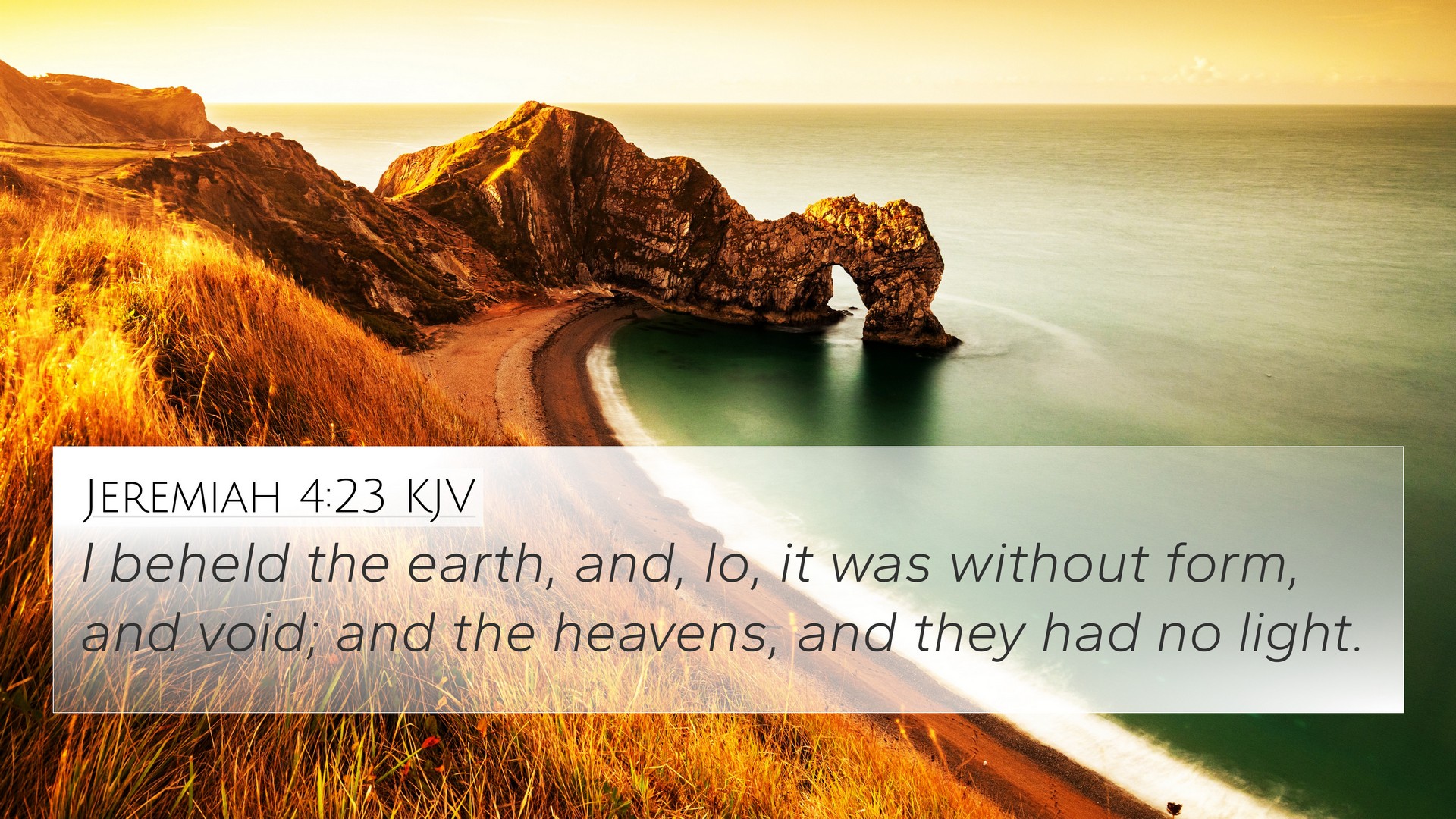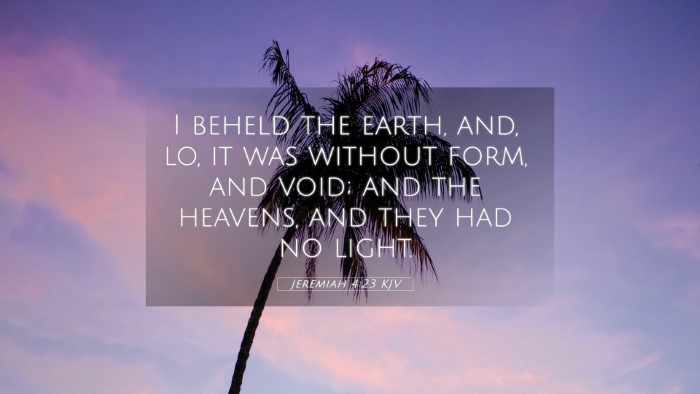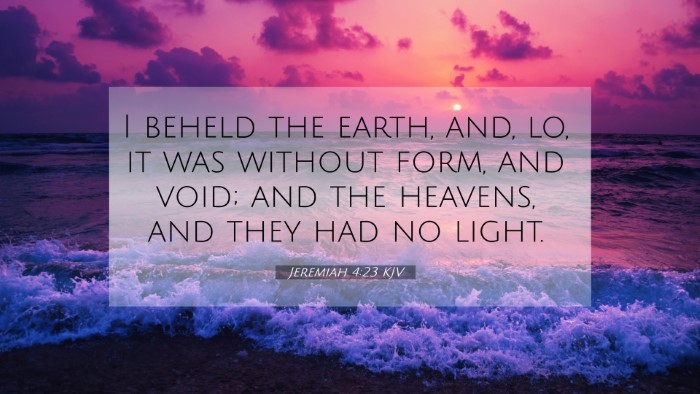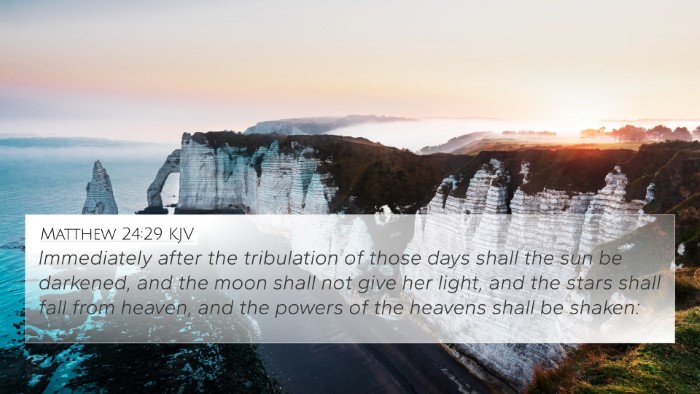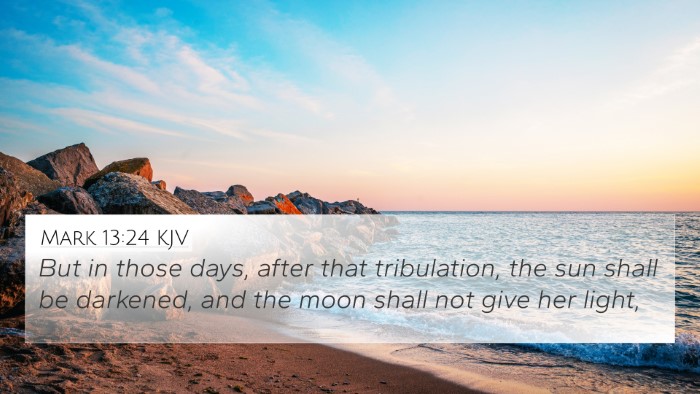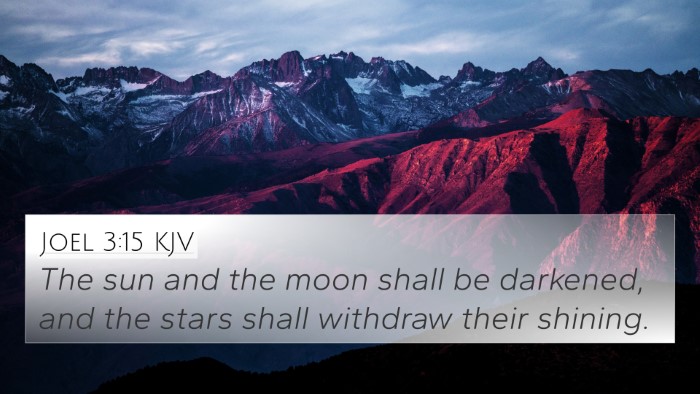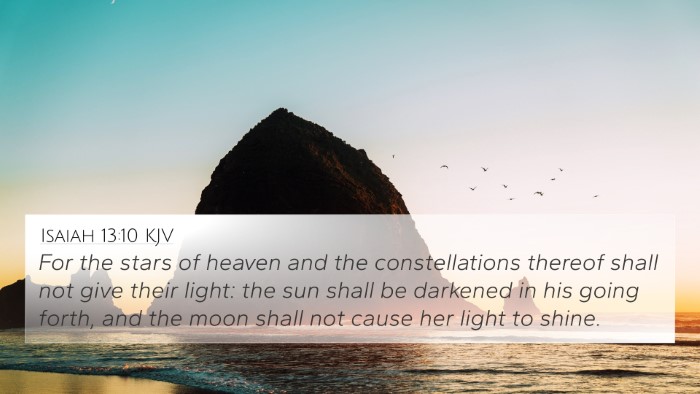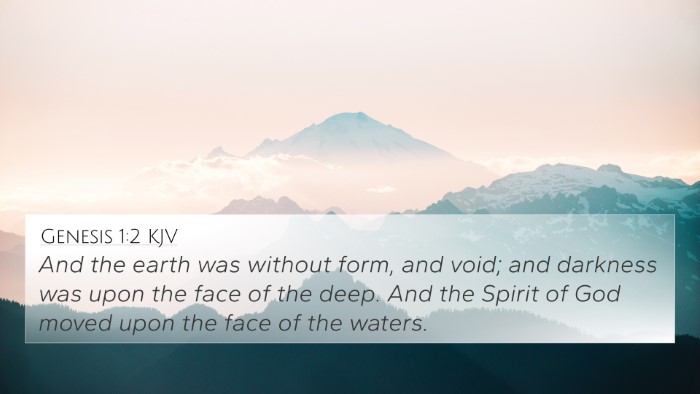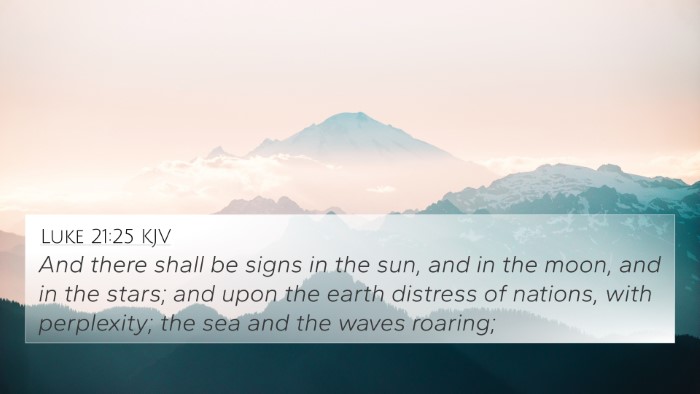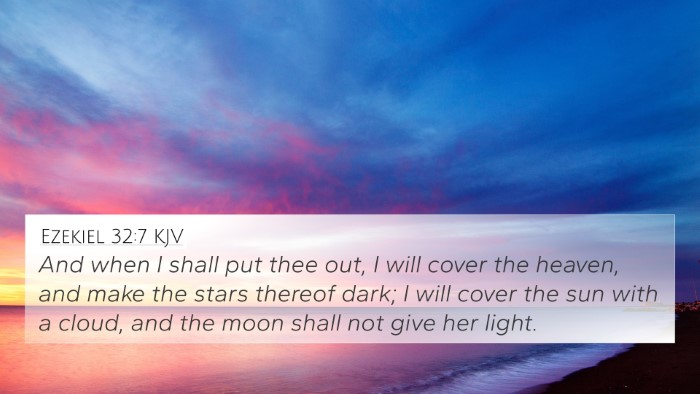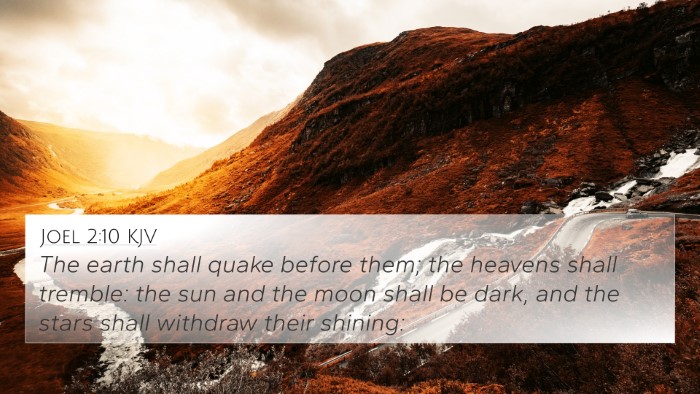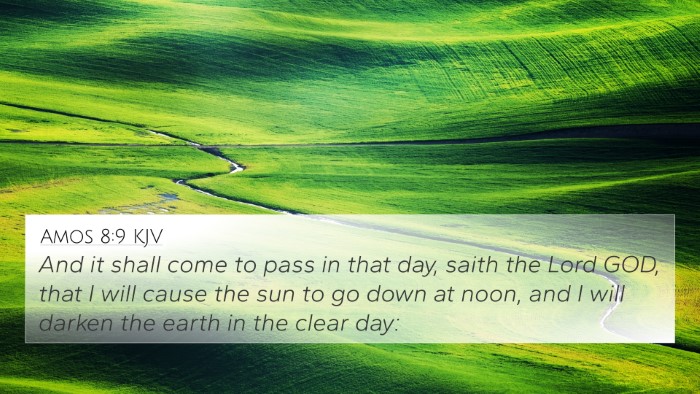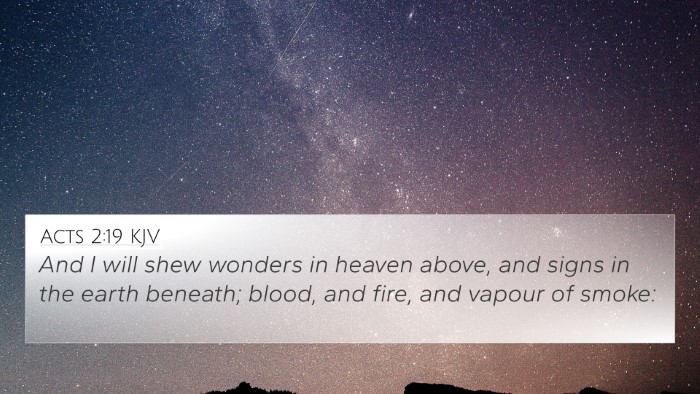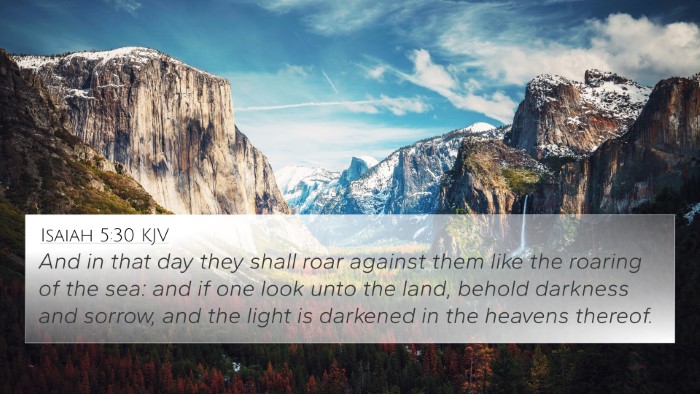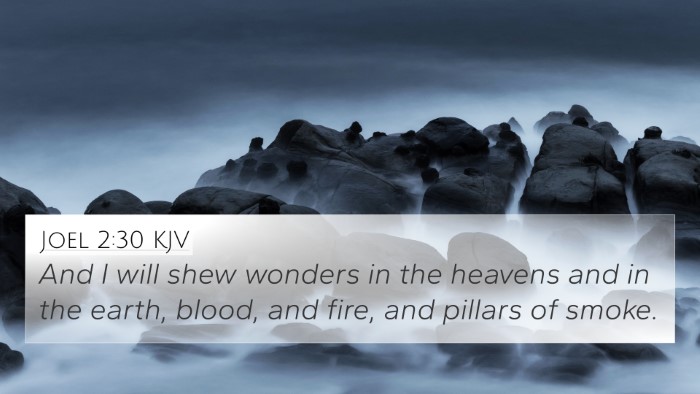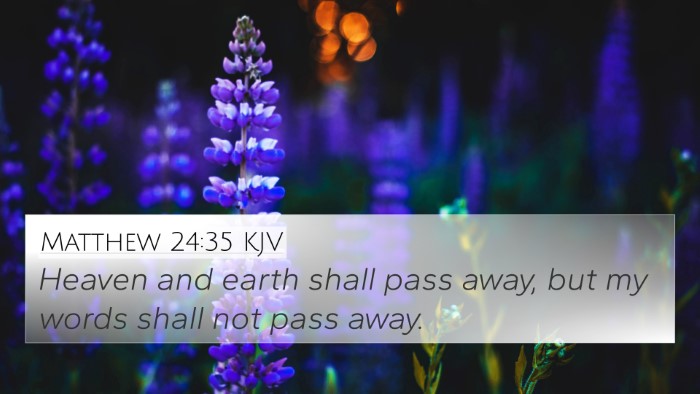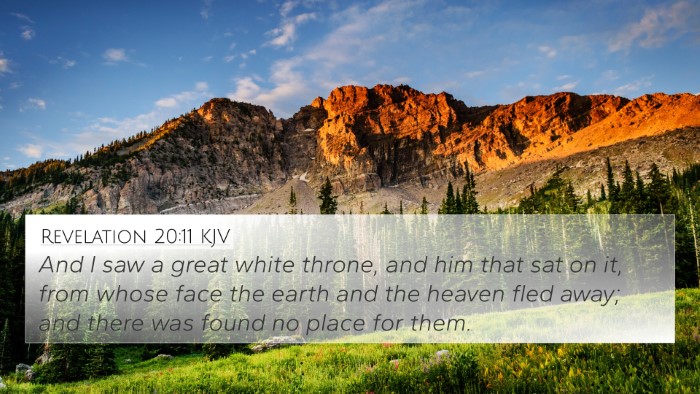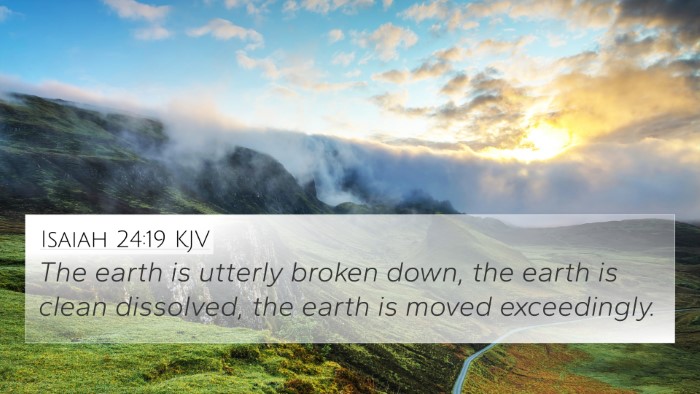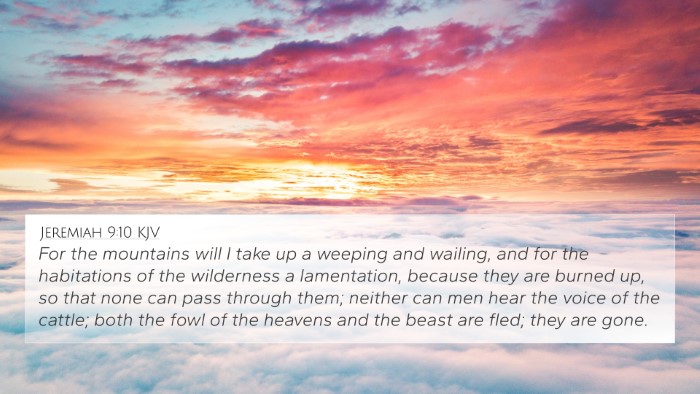Understanding Jeremiah 4:23
Jeremiah 4:23 states, "I beheld the earth, and, lo, it was without form, and void; and the heavens, and they had no light." This prophetic verse encapsulates a foreboding vision given to Jeremiah regarding the state of the earth prior to God's transformative work. Through an analysis of this verse, we gain insight into God’s power to create and the consequences of human sin.
Verse Context
This verse appears during a time when God is addressing the people of Judah, warning them of impending judgment due to their persistent idolatry and rebellion. The imagery of the earth being "without form and void" is reminiscent of Genesis 1:2, invoking themes of chaos and divine re-creation.
Commentary Insights
Matthew Henry's Commentary
Matthew Henry explains that the phrase "without form and void" suggests a state of desolation that results from sin and judgment. He emphasizes the theological implications of this desolation, indicating a need for repentance and a return to God. Henry also connects this imagery to other biblical texts that describe God's power over creation and desolation.
Albert Barnes' Notes on the Bible
Albert Barnes elaborates on the absence of light as a metaphor for spiritual darkness. He points out that God is capable of bringing order out of chaos, and he warns of the consequences of turning away from divine truth. Barnes urges readers to reflect on their spiritual condition in light of God's judgment and mercy.
Adam Clarke's Commentary
Adam Clarke provides a detailed analysis of the original Hebrew terms used in this verse, uncovering layers of meaning related to vanity and emptiness. He emphasizes the profound implications of this state for the people of Judah, and suggests that it serves as a foreshadowing of the eventual restoration that God will bring about.
Bible Cross References
To deepen the understanding of Jeremiah 4:23, it is beneficial to explore the following cross-references:
- Genesis 1:2: "And the earth was without form, and void; and darkness was upon the face of the deep."
- Isaiah 24:10: "The city of confusion is broken down: every house is shut up, that no man may come in."
- Isaiah 45:18: "For thus saith the LORD that created the heavens; God himself that formed the earth and made it; he hath established it, he created it not in vain."
- Ezekiel 33:11: "Say unto them, As I live, saith the Lord GOD, I have no pleasure in the death of the wicked; but that the wicked turn from his way and live."
- Romans 8:22: "For we know that the whole creation groaneth and travaileth in pain together until now."
- Job 10:8-9: "Thine hands have made me and fashioned me together round about; yet thou dost destroy me. Remember, I beseech thee, that thou hast made me as the clay; and wilt thou bring me into dust again?"
- Matthew 5:14: "Ye are the light of the world. A city that is set on a hill cannot be hid."
Thematic Connections
The thematic connections within the Bible surrounding this verse highlight the cycles of sin, judgment, and eventual restoration. They lead us to a greater understanding of:
- God's sovereignty in creation.
- The impact of human disobedience on the created order.
- The promise of redemption following judgment.
- Light versus darkness as a recurring motif in scripture.
Inter-Biblical Dialogue
In exploring Jeremiah 4:23, one can observe inter-Biblical dialogues that showcase the comprehensive narrative of God’s relationship with humanity. The implications of this verse resonate throughout both the Old and New Testaments, leading to the understanding that God's message of hope and redemption is woven through scripture.
Applying Biblical Cross-Referencing Techniques
Utilizing tools for Bible cross-referencing, such as a Bible concordance or a Bible cross-reference guide, allows for a deeper exploration of the scripture. Here are some methods:
- Comparative Bible verse analysis: Engaging with verses that share themes of judgment and restoration.
- Cross-reference Bible study: Identifying narratives that illustrate the transformation from chaos to order.
- Identifying connections between Old and New Testament: Exploring how the promise of hope is fulfilled in Christ.
Conclusion
In conclusion, Jeremiah 4:23 serves as a profound reminder of the spiritual realities reflected in the biblical text. Through careful study and cross-referencing, one can uncover the rich tapestry of God's Word that speaks to the human condition and the divine call to restoration. This awareness not only enhances personal understanding but also equips believers with insights for sharing the message of hope.
